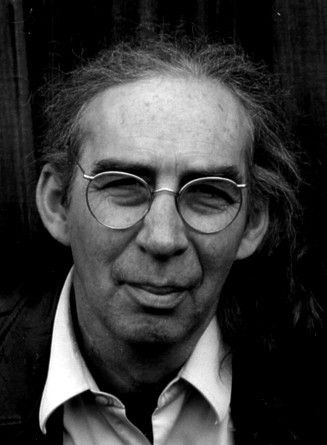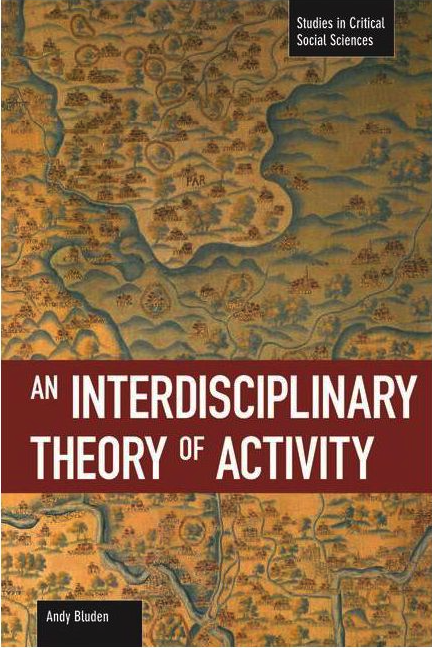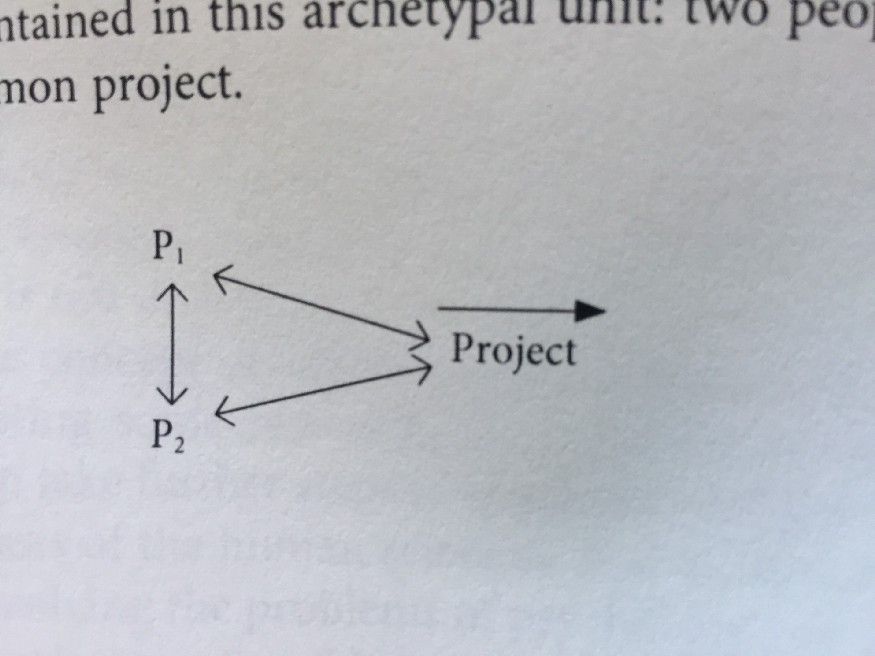Andy Blunden’s vision of Activity Theory

Activity Theory or the “Cultural-historical activity theory (CHAT)” is an interdisciplinary philosophical framework for studying both individual and social aspects of human behavior. Activity Theory is an established theoretical tradition with several theoretical approaches developed by different theorists. Originally, it was inspired by Russian/Soviet psychology of the 1920s and 1930s.
A major development of Activity Theory during the past decade is Andy Blunden’s account “An Interdisciplinary Theory of Activity”. Andy Blunden is an independent scholar in Melbourne, Australia. He works with the Independent Social Research Network and the Melbourne School of Continental Philosophy, and has run a Hegel Summer School since 1998.

Blunden’s vision of the interdisciplinary theory of Activity is inspired by Vasily Davydov’s argument:
I always argue that the problem of activity and the concept of activity are interdisciplinary by nature. There should be specified philosophical, sociological, culturological, psychological and physiological aspects here. That is why the issue of activity is not necessarily connected with psychology as a profession. It is connected at present because in the course of our history, activity turned out to be the thing on which our prominent psychologists focused their attention as early as in the Soviet Union days. Things just turned out this way. (Davydov, 1999: 50.)
In order to develop the notion of “Project as a unit of Activity” as a theoretical foundation of the new interdisciplinary theory of Activity, Blunden adopts Hegel’s logic and Vygotsky’s theory about “Unit of Analysis” and “Concept” as theoretical resources. The process is documented in four books: An Interdisciplinary Theory of Activity (2010), Concepts: A Critical Approach (2012), Collaborative Projects: An Interdisciplinary Study (2014), and Hegel for Social Movements (2019).
An essential challenge of theorizing “activity” in an interdisciplinary way is the source of activity. In order words, how is it possible to claim that there is an “activity” which contains various actions?
According to Andy Blunden, “In Activity Theory there is nothing in an activity other than human actions, and this is a thesis with which contemporary interactionist theories would be in agreement, eschewing recourse to biological determinism, religious or structural fatalism or any other force of human action as determinants of human life. But because there is nothing other than human actions to be found in an activity this does not mean that an activity is simply the additive sum of actions. In fact, the activity is generally a precondition for any of the component actions which instantiate it: when we act we do not generally create an activity, we join it. So Activity Theory recognizes that there are aggregates of actions which have a unity of their own for which, as the saying goes, the whole is greater than the sum of the parts. The question then is what is it that gives an activity its unity?” (2014, p.24)

In his 2010 book An Interdisciplinary Theory of Activity, Blunden traces the roots of Activity Theory from Goethe, Hegel, and Marx in order to present an immanent critique of Activity Theory and its contemporary version CHAT. The core of Blunden argument is a theoretical-methodological issue: Unit of Analysis. For Blunden, the concept of “Unit of Analysis” should be understood as Goethe’s Urphanomen which is also known as the ‘cell’. Blunden believes that the unit of analysis should be followed by an explanatory principle of “the part contains the whole”. In other words, if we want to understand a complex phenomenon, we should start the most primitive form of the phenomenon. For activity theorists, if they agree that their theoretical roots are ideas from Goethe, Hegel, Marx, and Vygotsky, then they have to respect this methodological criticism because the Urphanomen principle has been adopted by all of these predecessors.
Blunden adopts the Urphanomen principle and suggests a new unit of activity for developing an interdisciplinary theory of Activity. He says, “A project is something projected by the subject, rather than an object to which the subject is drawn; the subject may be an individual or many people who are united precisely in that they are pursuing the same project. A project is an ongoing collection of actions and is both the aim of the actions and the process of attaining that object. A project is a concept, but every individual has a different concept of the project, these constituting the various shades of meaning and connotations to be found in representations of the project. People may be fully committed to the project, or they may pursue the project for external rewards provided for their participation; people may ‘own’ a project, or be only barely aware of its existence.”(2010, p.9)
The solution of “Project as a unit of Activity” is summarized in a paragraph at the end of Introduction to Collaborative Projects. Blunden said, “How can we understand the relation between the motivation of individual actions on one hand, and on the other hand, the immanent objective of the project which forms the unifying principle of the project uniting all the disparate individual actions into a single activity? Hegel resolved this problem in his solution to the problem of the subsumption of any number of individual actions under a concept, but there is no criteria other than the concept itself determining this subsumption. The relation between an action and the project which gives to the action its rational meaning is the same as the relation between any individual discursive act and the concept which it instantiates, and the same as the relation between any individual thing and the category under which the thing is subsumed. The relation between the individual and the universal is mediated by the particular, that is by praxis, and it not to be conflated with the subjective-objective relation which is a quite distinct relation. The universal has no separate existence, but exists only in and through its particularization by individuals.”(2014, p.26)
Blunden also gives an archetypal unit of project in his 2010 book An Interdisciplinary Theory of Activity.

He says, “The rich context of the notion of collaboration also brings to light more complex relationships. The notions of hierarchy, command, division of labor, cooperation, exchange, service, attribution, exploitation, dependence, solidarity, and more can all be studied in the context of just two individuals working together on a common project. And yet almost all the mysteries of social science as well as a good part of psychology are contained in this archetypal unit: two people working together in a common project.” (2010, p.315)
Blunden’s 2012 book Concepts: A Critical Approach continues the journey. Blunden reviews the theoretical development of Concepts in an interdisciplinary approach which curates theories about Concepts from various disciplines such as cognitive psychology, analytic philosophy, linguistics, and the history of science. He adopts Hegel’s theory of concept and Lev Vygotsky’s cultural-historical psychology as theoretical resources and proposes a new approach of Concepts. He argues that concepts are equally subjective and objective: units both of consciousness and of the cultural formation of which one’s consciousness is part. In other words, the formation of a concept is activity.
“Project as a unit of activity” and “formation of concept is activity” are combined in Blunden’s 2014 book Collaborative Projects: An Interdisciplinary Study which is a collection of twelve research reports with a common theme. As the editor of the book, Blunden invites his friends to write a report about a concrete collaborative project and write a review on their story. The book also contains an introduction and a conclusion which are written by Blunden. In addition, Blunden also writes a case study about “Collaborative Learning Space” which was initiated by him in 1999.
What Blunden suggested are that 1) We can use “Project” as a new unit of analysis for Activity Theory, 2) Project should be understood as formulation of concept, and 3) The archetypal unit of “Project” is two people working together in a common project.
In the first ten year of the 21st century, Blunden laid a new foundation for Activity Theory in an age of information overload and platform capitalism. According to Blunden, “CHAT is already an emancipatory science. It is committed to the ethos of self-emancipation. It does not seek to control people, test them or predict their behavior, but rather to join people in striving for their own goals…CHAT aims at the self-determination of human beings. We can not do this with concepts which fail to capture the essential nature of human activity as being tied up with the projection of our ideals, however mistaken they may be from time to time. But self-determination is never that of being on an island. Self-determination, or sovereignty, is about participation in the self-determination of oneself and others, together as equals, through collaborative projects.”(2010, p.317-318)
In 1975, Charles A. Lave and James G. March published a book titled An Introduction To Models in The Social Sciences. They suggested an interpretation of the evaluation of models, “What we present here are some rather simple points of view about truth, beauty, and justice that we, and others, have found helpful in heightening the pleasures and usefulness of model building in social science.”
I think this simple idea is also helpful for evaluation of theories. I am not sure if we can claim that Blunden’s approach has a strong aspect of truth. However, I think his approach is simple which is the principle of beauty. Finally, what Blunden wants to build is an interdisciplinary science about self-emancipatory which refers to justice.
It takes time to raise a new theoretical approach. As Blunden pointed out, “…But it is early days. This book marks only the very first effort.”(2014, P.370) Also, it takes a village to raise a child. The development of the theoretical approach is a collaborative project. We need more people to echo Blunden’s vision.
